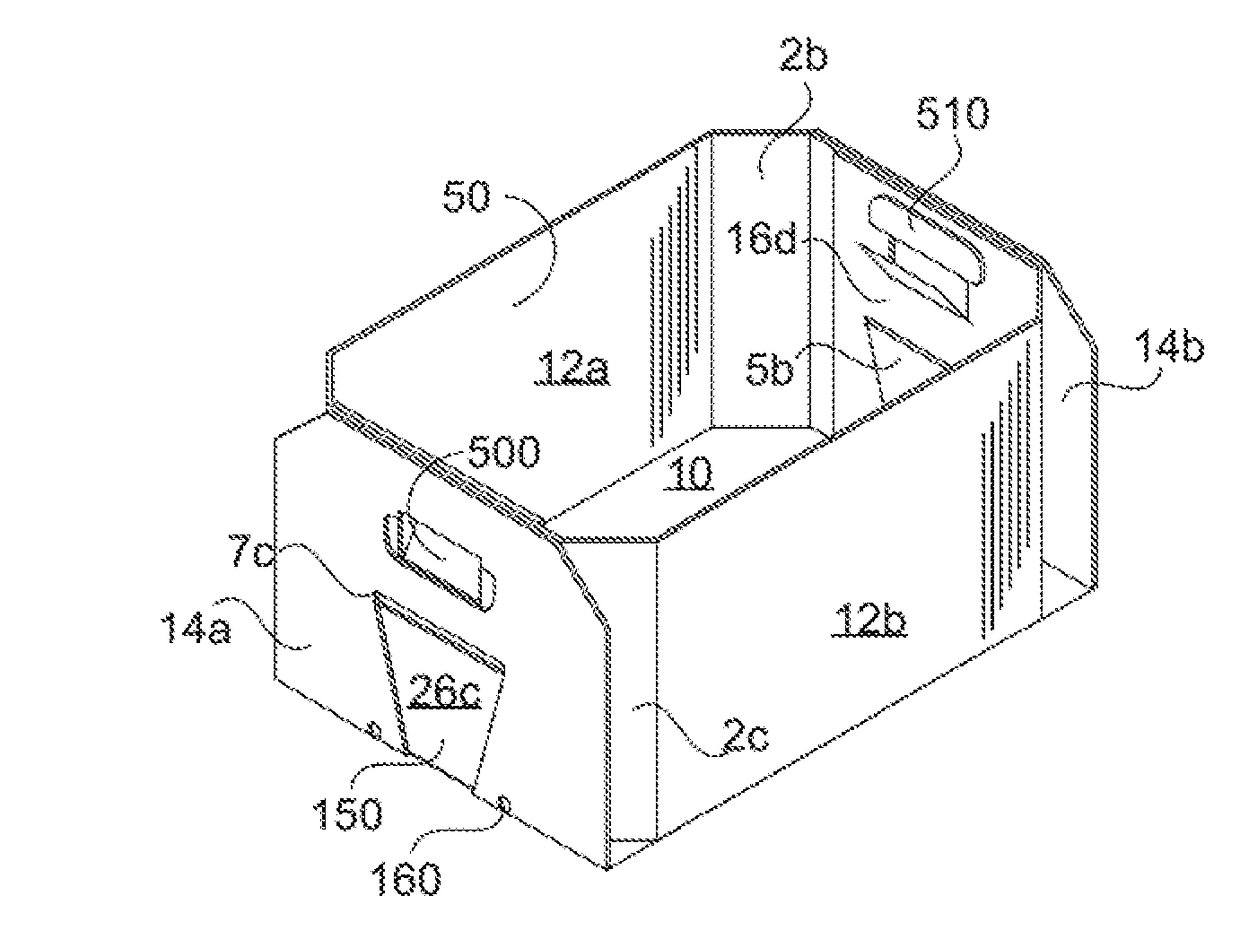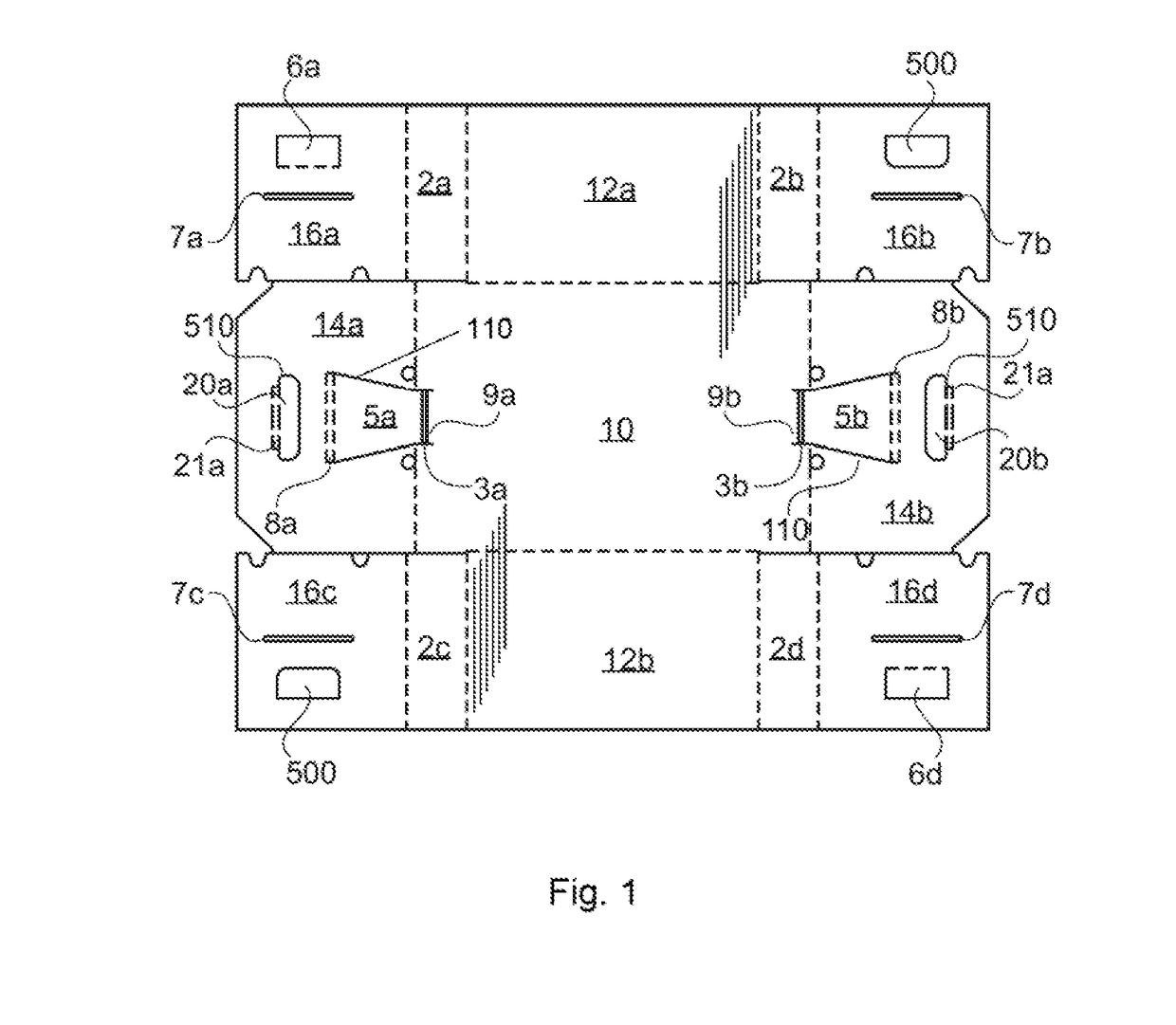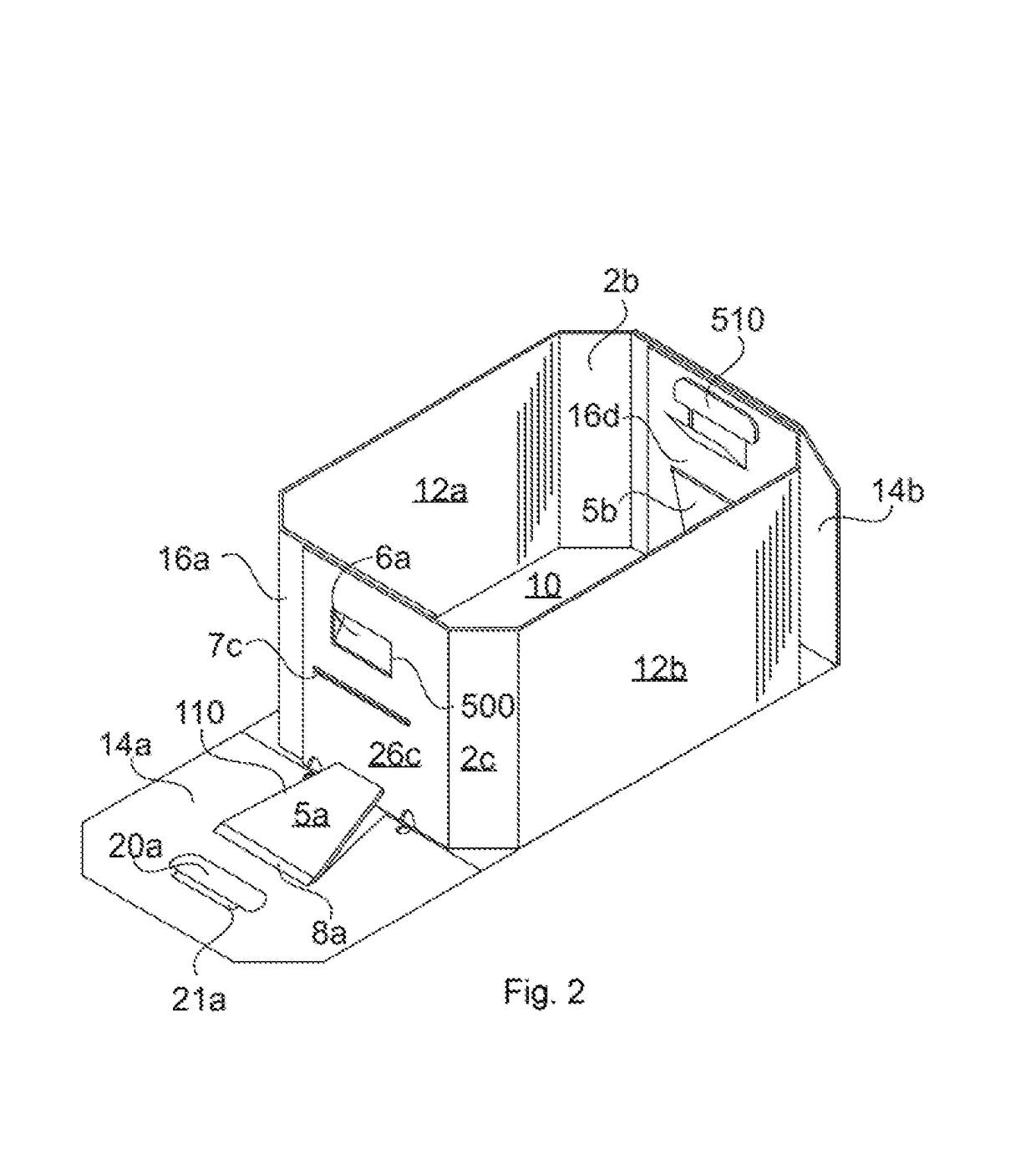Reverse tuck lock
a reverse tucking and lock technology, applied in the field of folding containers, can solve the problems of affecting the folding process, affecting the storage and/or shipping of large quantities of items, and not always readily available tapes and adhesives, etc., and achieve the effect of convenient storage and/or shipping a large quantity of items
- Summary
- Abstract
- Description
- Claims
- Application Information
AI Technical Summary
Benefits of technology
Problems solved by technology
Method used
Image
Examples
Embodiment Construction
[0079]As required, a detailed embodiment of the present invention is disclosed herein; however, it is to be understood that the disclosed embodiment is merely exemplary of the principles of the invention, which may be embodied in various forms. Therefore, specific structural and functional details disclosed herein are not to be interpreted as limiting, but merely as a basis for the claims and as a representative basis for teaching one skilled in the art to variously employ the present invention in virtually any appropriately detailed structure.
[0080]Referring to FIG. 1, a preferred embodiment of a flat pattern of the present invention includes a bottom panel 10, side panels 12a, 12b extending outward from opposed sides of the bottom panel 10, and end panels 14a, 14b extending outward from opposed ends of the bottom panel 10. In some embodiments, the side panels extend substantially between each end of the bottom panel and the end panels extend substantially between each side of the ...
PUM
 Login to View More
Login to View More Abstract
Description
Claims
Application Information
 Login to View More
Login to View More - R&D
- Intellectual Property
- Life Sciences
- Materials
- Tech Scout
- Unparalleled Data Quality
- Higher Quality Content
- 60% Fewer Hallucinations
Browse by: Latest US Patents, China's latest patents, Technical Efficacy Thesaurus, Application Domain, Technology Topic, Popular Technical Reports.
© 2025 PatSnap. All rights reserved.Legal|Privacy policy|Modern Slavery Act Transparency Statement|Sitemap|About US| Contact US: help@patsnap.com



